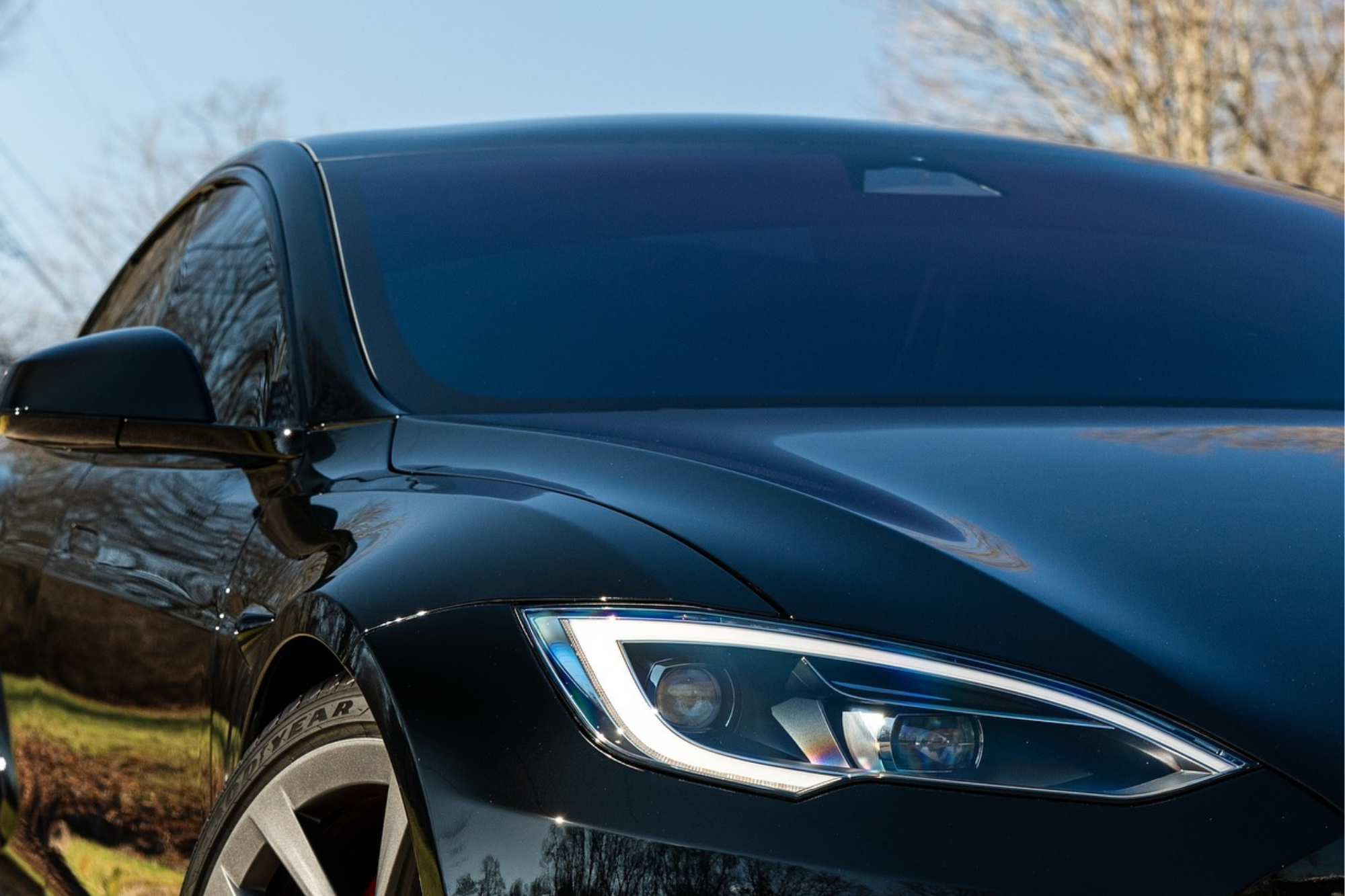UV rays degrade your car’s interior by breaking down the chemical bonds in upholstery and dashboard materials, leading to fading, discoloration, and a loss of structural integrity. Prolonged exposure causes your dashboard to crack and warp, while fabrics become brittle, diminishing both appearance and resale value. When you drive, your skin is exposed to harmful UVA and UVB rays, even with the windows closed. UVA rays speed up skin aging, and UVB rays increase the risk of sunburn and cancer. To protect your car and skin, consider Cleveland window tinting, a highly effective UV-resistant solution that helps block harmful rays and maintain your vehicle’s interior. For more insights on prevention, explore further information.
Key Takeaways
- UV rays degrade car upholstery, leading to fading, discoloration, and loss of structural integrity.
- Prolonged UV exposure causes dashboard plastics to fade, crack, and warp.
- Driving exposes the skin to harmful UVA and UVB rays, increasing the risk of aging and skin cancer.
- UV rays initiate fading and color changes, making car interiors appear dull and washed out.
- Window tinting and UV-resistant treatments effectively block harmful rays, preserving car interiors and protecting skin.
Effects on Car Upholstery
When UV rays strike your car’s interior, they don’t just warm the space; they actively contribute to the degradation of upholstery materials. The ultraviolet radiation causes the breakdown of chemical bonds within fabric and leather, leading to fading and loss of structural integrity.
Over time, you’ll notice discoloration and a brittle texture, which not only diminishes your car’s aesthetic appeal but also its resale value. Understanding car interior UV damage is essential to maintaining the longevity and appearance of your vehicle’s upholstery.
To protect car upholstery from these harmful effects, consider implementing preventive measures. One effective method is using UV-resistant seat covers, which act as a barrier between the sunlight and your car’s original materials.
These covers can considerably reduce exposure, helping to maintain color vibrancy and material strength. Sunshades are another practical solution, especially for parked vehicles, as they block direct sun exposure through the windshield, where UV concentration is highest.
Additionally, regularly applying UV protectant sprays to fabric and leather can further shield them from UV-induced deterioration. By taking these steps, you can effectively preserve your car’s interior against the relentless impact of UV rays.
Impact on Dashboard Materials
Just as UV rays wreak havoc on your car’s upholstery, they also cause substantial damage to dashboard materials. Prolonged exposure to UV radiation leads to the breakdown of polymers in dashboard plastics, resulting in fading, cracking, and warping.
This form of car interior UV damage not only diminishes the aesthetic appeal but also compromises the structural integrity of your dashboard. The intense heat from direct sunlight exacerbates the issue by expanding and contracting the materials, leading to further degradation.
To protect car upholstery and dashboards alike, consider using UV-resistant treatments. These products form a barrier that reduces the penetration of harmful UV rays, preserving both color and texture.
Regular application of these treatments can greatly extend the lifespan of your dashboard materials. Additionally, parking in shaded areas or using windshield sunshades can minimize direct sunlight exposure, further safeguarding your car’s interior.
Investing in quality UV protection measures, such as window tinting, is essential. It not only prevents costly repairs but also guarantees a comfortable and visually pleasing driving environment.
Skin Damage While Driving
Although you mightn’t notice it, driving exposes your skin to harmful UV rays, even through closed windows. These rays can lead to significant skin damage over time. UVA rays penetrate deeper into the skin, accelerating aging and causing wrinkles, fine lines, and age spots.
Meanwhile, UVB rays can cause sunburn and increase the risk of skin cancer. Many people underestimate how much UV exposure they receive while in their vehicle, especially during long commutes or road trips.
To mitigate UV rays and skin damage while driving, consider investing in UV protection for cars, such as UV-protective window films or tints. These enhancements block a substantial portion of harmful rays, reducing your skin’s exposure.
Additionally, it’s wise to apply sunscreen with a high SPF, even when you’re inside the car. Sunscreen acts as a barrier, helping to prevent immediate and long-term damage.
Wearing protective clothing like long sleeves, hats, or gloves can provide an additional layer of defense. Taking these steps not only safeguards your skin but also promotes overall health, allowing you to enjoy your driving experience without compromising your well-being.
Fading and Color Changes
Prolonged exposure to UV rays can lead to significant fading and color changes in your car’s interior. When UV rays penetrate your vehicle, they initiate a chemical reaction in the materials within. This reaction breaks down the molecular structure of your car’s upholstery, dashboard, and other surfaces, leading to noticeable discoloration.
Over time, the vibrant colors of your seats and dashboard can transform into dull, washed-out hues. This process of UV rays car damage not only affects aesthetics but also reduces the resale value of your vehicle.
Fabrics, leather, and vinyl are particularly susceptible to fading. UV rays cause these materials to lose their color integrity, resulting in uneven patches and unsightly streaks. This damage emphasizes the need to protect car upholstery from harmful sunlight.
Beyond fading, UV exposure can also make materials more brittle, leading to cracks and further degradation.
Understanding the science behind this damage highlights the importance of taking preventive measures. By acknowledging how UV rays impact your car’s interior, you can better appreciate the necessity of protective steps to maintain your vehicle’s appearance and functionality over time.
Prevention for Vehicle Interiors
To protect your vehicle’s interior from the damaging effects of UV rays, implementing effective preventive measures is crucial. One of the most effective strategies is window tinting, which involves applying a thin film to your car’s windows to block harmful UV rays.
By reducing the sun’s penetration, window tinting not only keeps the interior cooler but also prevents the fading and deterioration of materials like leather and fabric. Investing in professional window tinting services enhances your vehicle’s comfort, longevity, and overall appearance.
In addition to window tinting, using UV-resistant seat covers and mats can considerably protect car upholstery. These specially designed products reflect UV rays, preventing them from breaking down fibers and causing fading or cracking.
Verify that you choose high-quality covers that fit your vehicle’s interior to maximize protection.
Another preventive measure is applying UV protectant sprays to dashboards and other plastic surfaces. These sprays form a protective barrier against UV rays, reducing the risk of cracking and warping.
Regular application can prolong the life of your car’s interior components.
Finally, consider using sunshades when parking. They effectively block direct sunlight, maintaining a comfortable temperature and preventing UV damage to your vehicle’s interior.
Skin Protection Strategies
While protecting your car’s interior is important, safeguarding your skin from UV rays is equally essential. UV rays and skin damage can lead to premature aging, sunburn, and even skin cancer. To protect yourself effectively, incorporate UV protection products into your routine.
Start by applying a broad-spectrum sunscreen with at least SPF 30 daily. Even when you’re inside your car, UV rays can penetrate through windows, making sunscreen a vital defense.
Consider investing in UV-protective window films or tints for your vehicle. These films can block a considerable percentage of harmful UV rays, reducing your skin’s exposure while driving.
Additionally, wearing protective clothing, such as long sleeves and wide-brimmed hats, provides an extra layer of defense against the sun’s rays.
Don’t underestimate the power of accessories like sunglasses. They shield your eyes from UV radiation, which can contribute to cataracts and other eye conditions.
By combining these strategies, you can greatly reduce UV rays and skin damage. Remember, the key to effective protection lies in a multi-layered approach that includes both UV protection products and practical lifestyle choices.
Stay vigilant, and prioritize your skin’s health every day.
In Summary
By understanding how UV rays affect both your car’s interior and your skin, you can take effective measures to protect them. Use sunshades, UV-protective window films, and regular conditioning to preserve your vehicle’s upholstery and dashboard. For your skin, apply broad-spectrum sunscreen and wear protective clothing when driving. These proactive steps not only maintain your car’s value but also safeguard your health, ensuring that you enjoy both a comfortable ride and long-term well-being. Mr. Detail – Ceramic Pro Cleveland offers professional solutions like high-quality window tinting and ceramic coatings to enhance UV protection for both your vehicle and yourself.


